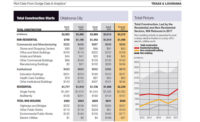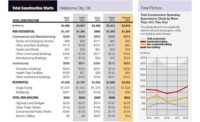In a boom defying the national bust, Oklahoma City is witnessing approximately $2 billion worth of public and private development. The state capital�s major weapon against the Great Recession is its 17-year-old Metropolitan Area Projects program, designed to put the city back on the map through civic renewal that attracts private investment.


Last December, voters approved the $777-million third phase of the capital improvement program, called MAPS 3. In three votes since 1993, voters have committed $1.8 billion to the downtown revitalization.
Over the next nine years, MAPS 3— which, like its predecessors MAPS and MAPS for Kids, is financed by a one-cent increase in the city sales tax—will fund a 70-acre central park, a convention center, a downtown streetcar system, aquatic centers, boating facilities, and hiking and biking trails. (The sales tax now is 8.375%.)
“We’ve got about 10 straight years of [construction] activity ahead,” says Oklahoma City Mayor Mick Cornett (R).
Oklahoma City bottomed out in the 1980s. The first MAPS initiative passed because “our citizens were desperate to pull this city up from an economic depression and create the city they wanted,” says Roy Williams, president and CEO of the Oklahoma City Chamber of Commerce.
There is so much momentum in the city’s comeback that, even with the recession, “we’ve never stopped investing,” says Cornett. “[After a] lousy 2009, the last couple of sales tax checks have been the largest we’ve ever had,” he adds.
MAPS isn’t the whole story. In late 2007, voters approved bonds for the $140-million Project 180, which called for putting a new face on the 180-acre city center. Street, sidewalk, park and plaza upgrades should be finished by 2014.
The strategy to revitalize and renew the capital is working, say the mayor and others. “Our job market also has remained fairly stable during the recession, with one of the lowest unemployment rates in the nation for large metro areas,” says Carl Williams, president and CEO of Associated Builders and Contractors of Oklahoma City.
Growth
The city’s population grew 6.2% from 2000 to 2006, to 537,734. In September, the city had a 6% unemployment rate compared with a national rate of 9.6%.
Civic projects and growth in the housing market also have kept construction employment strong. Last year, the construction sector grew to 4.6% from 4.2% of the economy, says Roy Williams.
Other evidence the MAPS strategy is working came several years ago when Devon Energy Corp., a major independent energy firm, announced plans to break state height records with an 850-ft-tall, 50-story headquarters downtown. The 1.9-million-sq-ft Devon World Headquarters Tower, designed by Pickard Chilton Architects Inc., New Haven, Conn., is set to open in 2012, says the contractor, a joint venture of Holder Construction, Atlanta, and Flintco, Tulsa.
The $750-million project triggered the formation of a tax-increment financing district to capture new tax revenue for investment. The outcome is that Devon tower is paying $115 million toward Project 180.



